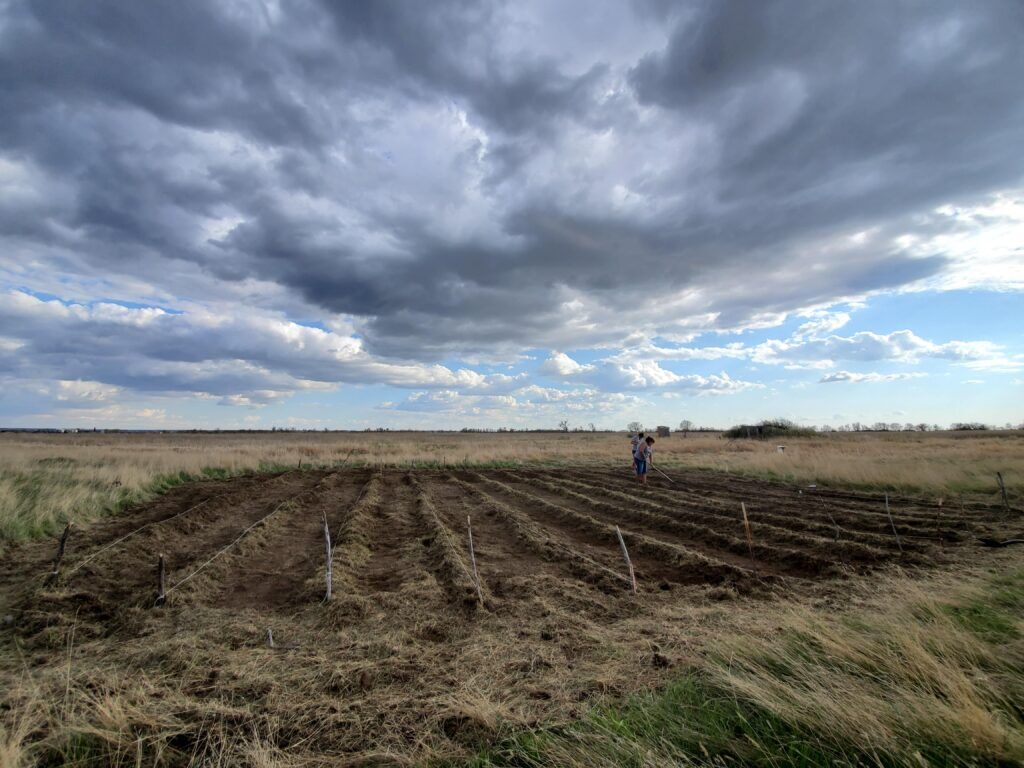by Kai Teague

Family Cooperative Farm, Poplar, Montana
What does water do?
What does any seed, shoot, or root do?
What does any other animal do? Buffalo, and birds
What about moss or matts that grow on rocks?
They disrupt, stir, break…ground, soil, rocks, and seeds.
Water and wind move over, and through, eroding and shaping this entire planet.
What happens if no animal or bird, or insect, or wind or rain moved through a place, relocated pollen, and knocked seeds out of the pods?
Our world, our homeplace was formed, from collisions, and chaos that created everything we know.
This is my family’s land. This was my grandma Vivian’s home. In 2019, we started a large-scale garden (almost an acre in size). Aside from an initial pass with a tiller to break up what had been very tall grass, most everything since has been done by hand. We built the rows, planted the seeds, pulled weeds, watered the first year by hand, harvested, cleaned, and shucked each carrot, beet, potato, and ear of corn. We saved seeds from our corn, beans, and squash, which we planted the next year.
Autumn Beauty Sunflower, Poplar, MT
During 2020, we provided over 80% of all of our food grown to the tribal elder’s center, to families, and to anyone who reached out to us. We took roughly 40 vases worth of sunflowers and sent them with our sister to share with the elementary teachers coming back to school during a global pandemic.
Giving Back
Prairie sage gone to seed, Poplar, Montana
It has been about four years since my grandma’s land was last contracted to a local wheat grower. In the last couple years, I have started to identify the various birds, plants, and animals that move through here.
I have counted at least 30 different bird types. This land has hosted foxes and their cubs, deer, pheasants, ground nesting hawks, voles, ground squirrels, rabbits, badgers and at least four species of hawks. There are at least four native grass varieties here: yarrow, wild rose, chokecherries, prickly pear cactus, prairie sage, sage brush, women’s sage, red dock, cat tails, moss, lichen, an abundance of pennycress, and many more medicines that I am just getting to know.
We can never go back to what was, and the nature of existence is change…. time, gravity, pressure, wind, rain, heat, life, and death, is all some form of change. But I wonder what it would mean for us to get land back. Are we prepared to do that work and nurture that relationship?
Relatives, we can at any moment go out and get to know our homelands, or the lands wherever we call home. We might not all be ready, and healing is a process and it’s a process we all deserve to enact when we are ready for it.
Read Part 1: The Land: Meaning, Perception and Worldviews
